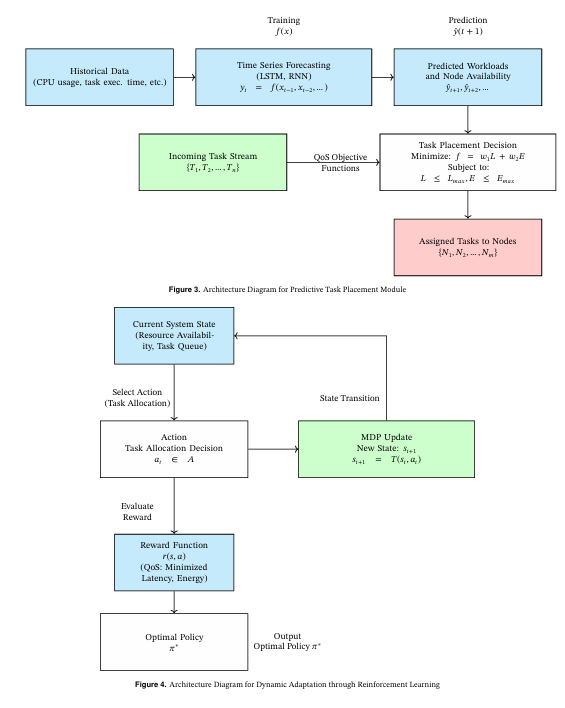AI-Driven Task Scheduling in Heterogeneous Fog Computing Environments: Optimizing Task Placement Across Diverse Fog Nodes by Considering Multiple QoS Metrics

Published 2020-12-10
Keywords
- AI-based task scheduling,
- Fog computing,
- Heterogeneous networks,
- Internet of Things (IoT),
- Latency reduction
- .Machine learning (ML),
- Quality of Service (QoS) ...More
How to Cite
Abstract
Fog computing paradigm extends cloud services to the network's edge in order to improve the performance of latency-sensitive and resource-constrained applications by enabling localized processing and storage. As the proliferation of Internet of Things (IoT) devices continues to grow, fog computing presents a viable solution for addressing the limitations of centralized cloud architectures. However, effective task scheduling in fog computing environments is a significant challenge in heterogeneous networks where nodes vary in terms of computational power, storage, and energy capacity. This paper explores the development and application of AI-based algorithms for task scheduling in heterogeneous fog computing environments, focusing on optimizing QoS metrics simultaneously. The paper first provides an overview of fog computing architecture and the challenges posed by heterogeneity. It then explores the role of AI in task scheduling, highlighting how machine learning (ML) and reinforcement learning (RL) techniques can be leveraged to improve decision-making processes. Through a detailed analysis of existing AI-based scheduling models, this study outlines the key features, advantages, and limitations of each. The paper also proposes a novel AI-driven approach that integrates multiple QoS metrics, evaluates task placement efficiency, and adapts to real-time network conditions. The findings suggest that AI-driven scheduling can significantly reduce latency, minimize energy consumption, and improve response times, contributing to more efficient resource utilization in fog computing environments.
